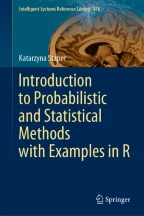
The field of statistics deals with collecting, exploring and presenting large amounts of data to discover underlying patterns and trends. Statistics is applied every day in many areas of our lives: business, industry, medicine and government—to facilitate making informed decisions in the presence of uncertainty and variation. For example, factory authorities use information from statistical quality control unit to know whether the length or weight of their products is within established standards. In this chapter, we present the basic steps of performing such statistical study which relies on employing a small, representative sample of products to make statistical inference of a wider population. We first describe methods of descriptive statistics which enable to capture the important features from sample data using tables, charts and graphs. Then, the described sampling distributions pave the way to inferential statistics, which allows us to draw conclusions about the whole population from which we took the sample. We describe here the basics of such statistical inference: parametric and nonparametric methods of estimation and hypothesis testing. Also some examples of non-classical statistical methods are presented.
This is a preview of subscription content, log in via an institution to check access.
eBook EUR 71.68 Price includes VAT (France)
Softcover Book EUR 89.66 Price includes VAT (France)
Hardcover Book EUR 105.49 Price includes VAT (France)
Tax calculation will be finalised at checkout
Purchases are for personal use only